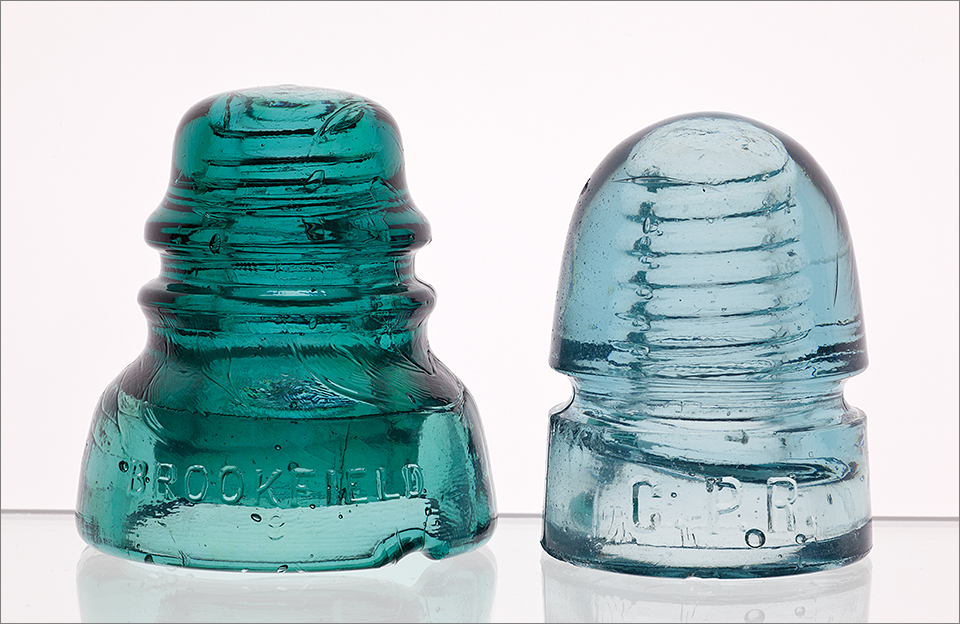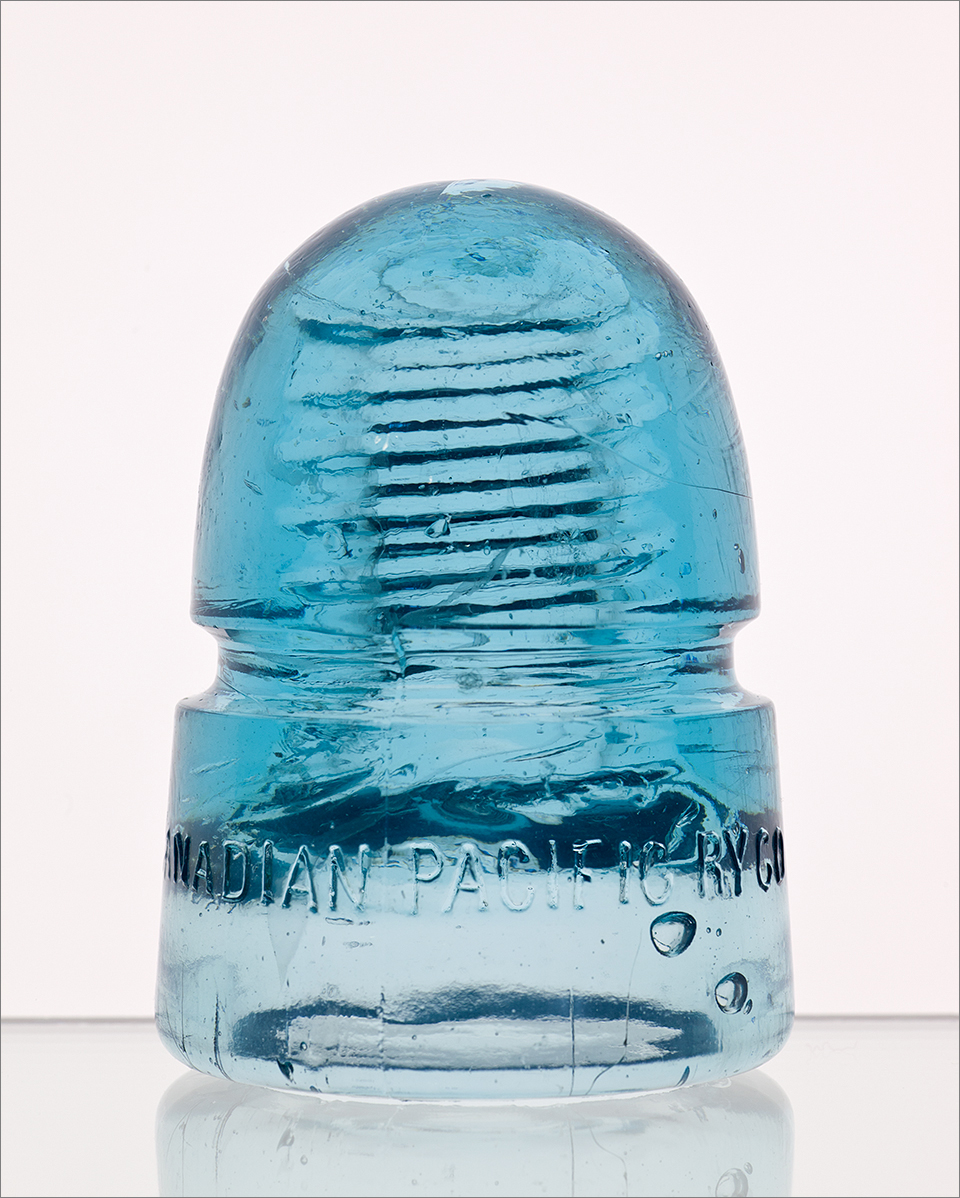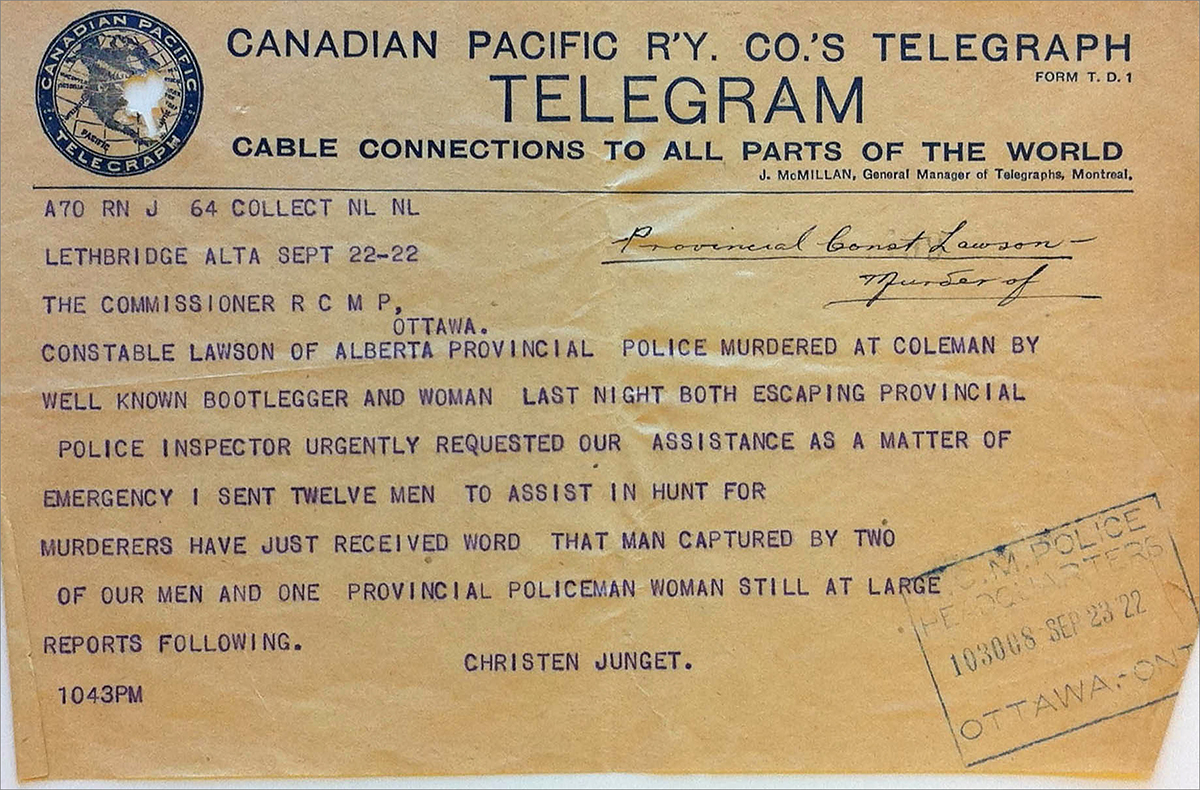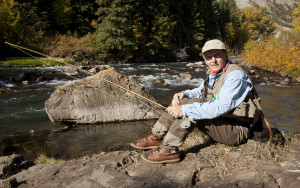
It’s something we don’t see much anymore, but at one time telegraph lines stretched across Canada like spider webs, from coast to coast. Many of these lines followed the right of way that railroads provided, and in many instances were owned by these very same railroad companies. Such was the case in Crowsnest Pass, with the coming of the Canadian Pacific Railway in 1898. During construction of the rail line through the Pass, the company also erected their own telegraph line. It would provide them with an important means of communication in the construction process, and later, assist with the day-to-day operation of their railway. Not only would the telegraph line help to run the railway, it would also provide a valuable service to the general public. In doing so, it became an extremely profitable venture for the railway company. Miles upon miles of wire, attached to thousands upon thousands of glass or porcelain insulators, high atop an endless number of wooden telegraph poles, would make it possible for anyone to send messages to distant places in a fraction of the time it would otherwise take to send a letter, via conventional mail.
Telegraphs were used to send news (good and bad) and other information into and out of a community, and were the best way of communicating quickly across great distances. In the Crowsnest Pass, telegraphs would go on to provide word to the rest of the world on historic events such as the 1903 Frank Slide disaster and the 1914 Hillcrest Mine explosion. The robbery of passengers at gunpoint on a Canadian Pacific Railway train near Coleman in 1920 and the fatal shooting of an Alberta Provincial Police constable by a well known Blairmore bootlegger and his female accomplice (Emilio Picariello and Florence Losandro), in 1922, also drew plenty of attention at the local telegraph office.
Although commercial telegraph service ended in the late 1960s or early ’70s, many of the telegraph poles remained standing in Crowsnest Pass for some time. Gradually, most were dismantled and taken down. The last of these were dropped to the ground a couple of years ago when CPR crews removed the few remaining ones in Frank and near Crowsnest Lake. The glass insulators shown here came from these last surviving poles. I wonder what messages were transmitted through the wires attached to these colored pieces of glass from the passt? We’ll never know.
Article Refrences & Credits
CPR Telegram: Library & Archives Canada




8 Comments
Christen Junget was my great-grandfather. Thanks for posting that.
Hi Ann,
I’m glad you liked the post. Your great-grandfather would have been an interesting person to know. I’m sure he participated in many interesting and historic events during his career. The telegram he sent to Ottawa following the capture of Emilio Picariello in September 1922 set everything in motion for what would become a story everyone in Crowsnest Pass is familiar with. If you’re interested, I cover this in my June 5, 2017 post, Emperor Pick – The Bottle King. Thanks for commenting!
Vic: Love the, Glass for the Past…
robert
Robert:
Glad you liked the article. Thanks for commenting. I appreciate it!
Vic: To be honest it didn’t read the article…it was the headline photo that caught my attention…the 2 insulators. It is the way you captured them: the colors and white behind along with the surface they are resting on.. I guess the whole composition. The blog photos that jump out for me most, my favorites, are the glass from the passt series…again the way you capture them( composition), series stuff,and choice of background colors….also like the iris one and 3 pieces of pottery/ceramic. I guess they could all be considered attention to Still Life.
robert
Hi Robert:
Okay, I’m glad you like the insulator photos. It’s not the type of photography I’m most comfortable with, but I enjoy dabbling with taking pictures indoors. It’s a good diversion when it’s -30 C outside. I’m sure you know all about the weather in the Pass, as of late. The insulators were backlit, sitting on a glass shelf in a lightbox display. With this type of lighting, you can see all the imperfections in the glass – bubbles, swirls, cooling marks …etc. You can really see this in the larger, expanded view of the aqua blue CPR insulator shown later in the article. The colors in the glass really “pop” with this lighting, too. The insulators I used are pretty neat to look at and they’re in great shape, considering they’re about a hundred years old.
I used a homemade light box/tent to take the iris in glass container and the ceramic pottery photos, then used software (Topaz Simplify) to provide an artistic effect to them. Colored paper was used for the backdrops.
BTW, I really like the B&W effects you are using to highlight the photos on your fishing/photography blog. They are very unique and artistic, and I enjoy looking at them. You have a good eye for taking these kinds of pictures. All the best!
Hi Vic;
As always your post and photos are interesting and well done. Interestingly, my Dad was in The RCMP stationed in Lethbridge at the time of the telegraph to the Commissioner of the RCMP re the sad and tragic death of Constable Lawson.
Hi Linder:
Thanks for the compliment and for commenting. Constable Lawson’s death would have been big news back then. The telegram in the article was sent by Christen Junget, the RCMP superintendent in Lethbridge at the time. It’s interesting to know your Dad was stationed in Lethbridge during this event. I’m sure he would have known what was going on in Crowsnest Pass when all this happened.
Incidentally, the Crowsnest Historical Society is currently restoring the former Alberta Provincial Police Barracks in Coleman, where Constable Lawson was shot and killed. Upon its completion later this year, the barracks will be open to the public. There will be exhibits on display about prohibition in Alberta and Crowsnest Pass, including the tragic shooting of Constable Lawson and the subsequent trial and hanging of Picariello and Losandro. The official opening of the APP Barracks is scheduled for July 1.